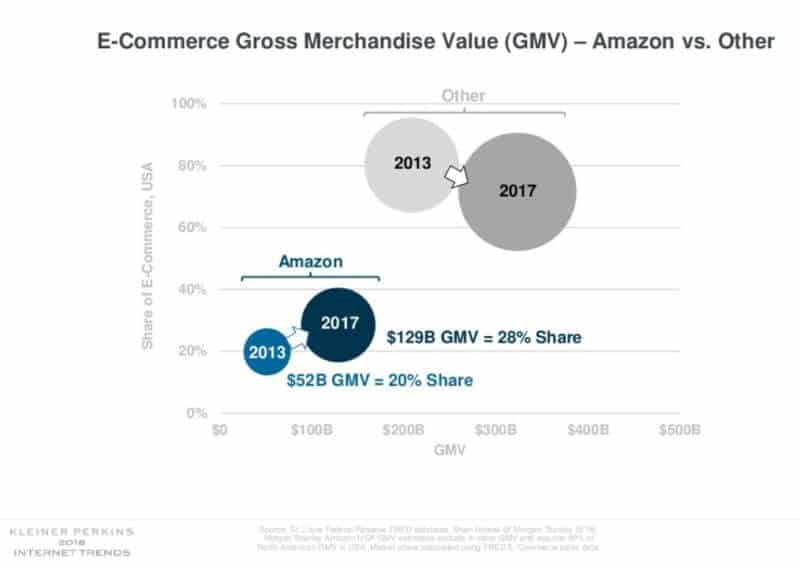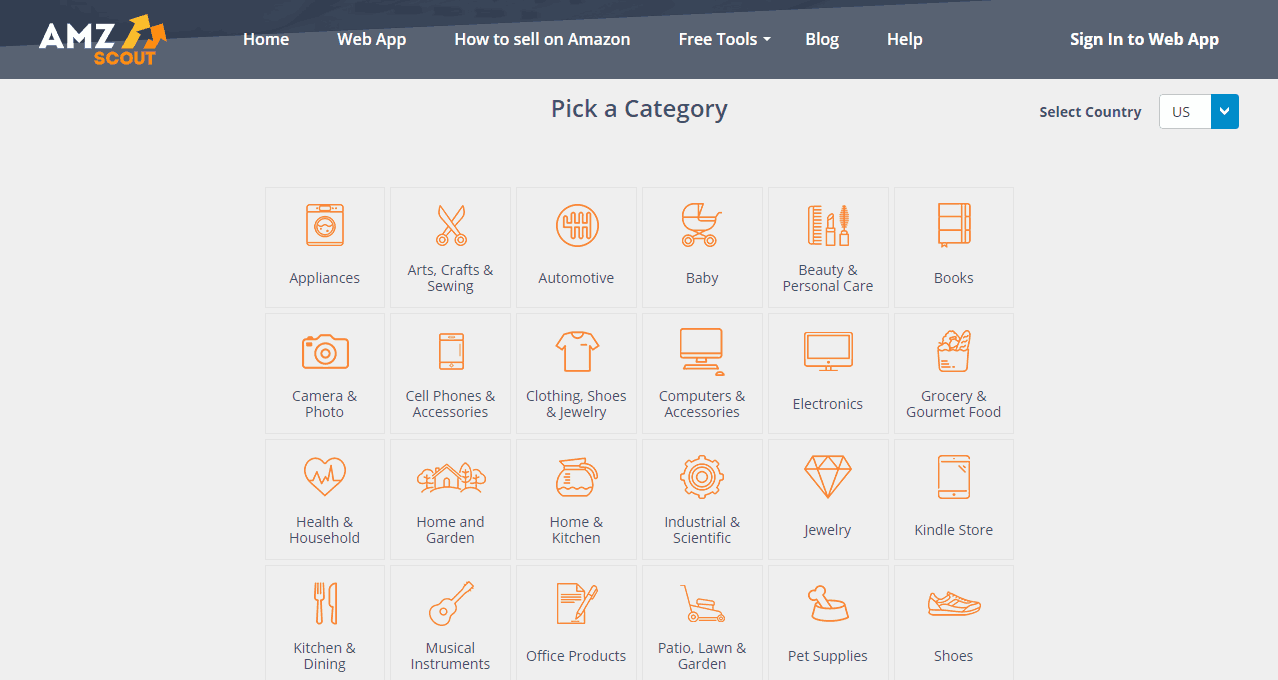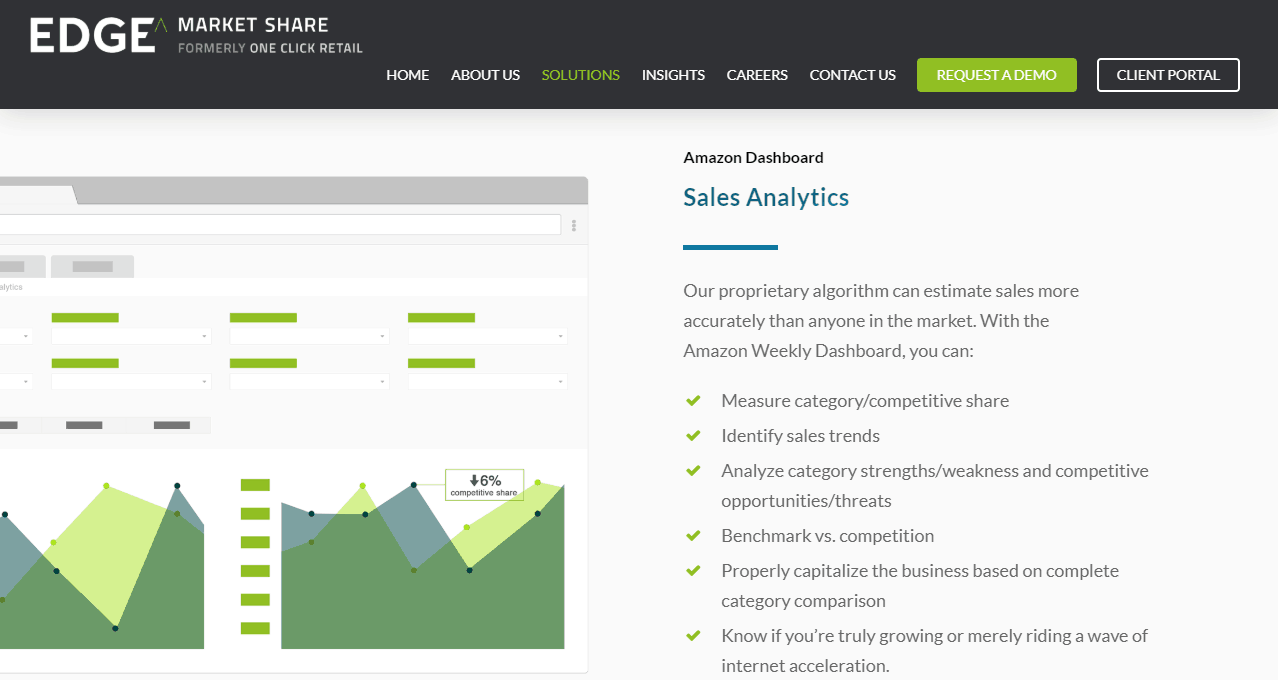Measuring your market share on Amazon isn’t as simple as looking at your sales growth versus total market growth. If you know a product’s sales ranking, you can use a simple formula to estimate your sales, but you can’t calculate your market share on Amazon as simply as that. Ecommerce numbers are often based on the top ranking products only, for one thing. And Amazon keeps their data very close to the vest.
The Bigger Picture of the Amazon Market Share
Ecommerce, and Amazon in particular, has been experiencing significant market growth year over year. The numbers are as high as almost 16% from 2016 to 2017 in categories like apparel, books, and consumer electronics. And the trend is pointing steadily upward.
Measuring your market share on Amazon isn’t as simple as looking at your sales growth versus total market growth. If you know a product’s sales ranking, you can use a simple formula to estimate your sales, but you can’t calculate your market share on Amazon as simply as that. Ecommerce numbers are often based on the top ranking products only, for one thing. And Amazon keeps their data very close to the vest.
The Bigger Picture of the Amazon Market Share
Ecommerce, and Amazon in particular, has been experiencing significant market growth year over year. The numbers are as high as almost 16% from 2016 to 2017 in categories like apparel, books, and consumer electronics. And the trend is pointing steadily upward.
If you are in ecommerce, then you are likely seeing growth in sales no matter what you’ve done to encourage it. You can see as much as 10% growth easily just by adding new products to your offering. Even with the same inventory, you might see this simply because the total market share on Amazon has grown; i.e., simply because more people are shopping online every year.
Looking at your sales doesn’t tell you very much in terms of how your market share on Amazon stacks up against other sellers and the bigger picture. If you look at the growth rates each year and you are not at that level, then, in reality, you are losing market share on Amazon, even if you were pleased as pie to hit the 10% mark at the close of 2018.
So how, then, do you measure your comparative success?
Your Actual Market Share on Amazon
To get a more accurate idea of what your market share on Amazon really is – or on any other ecommerce platform, for that matter – you need to take a few extra steps. You need to see how your products are performing year over year in comparison to other sellers and the ecommerce market as a whole. This means looking at your actual market share on Amazon by category and item, and over time.
Only then can you begin to grasp where you stand and, more importantly, begin to implement the right strategies to compete on the marketplace in a meaningful way.
Here are the three steps to get there:
1. Get the sales numbers for your categories and products.
There are many tools and resources that you can use to calculate the value of sales in specific categories on Amazon. For instance, the AMZScout Sales Estimator gives you data on average sales by category.
Note that these types of tools are useful if you know the product’s sales ranking, which you need to get an accurate estimate. Using a tool like SellerApp, however – which gives you data on estimated product sales– will give you different results.
Once you have the results per category, you’ll want to estimate the numbers for specific products. (Obviously, not all products within a category perform at the same level.) Use Amazon search rank and conversion data and do a search on Amazon to calculate this, or use another tool that gives you product-level data, like:
- ASINspector – instant data on the monthly sales volume of products, plus a profit calculator, product page analysis, and more
- JungleScout estimator – data on the number of sellers and reviews by product and category (which gives you estimates based solely on sales ranking)
- AMZTracker – data on the sales of best-selling products
Using any one of these tools will also give you different results since none of them have the data that Amazon does – it’s biggest and best kept secret. So, taking an average of what you get from a few tools is more accurate. Always calculate from the raw numbers and don’t figure your market share as a percentage value until the last step.
2. Calculate expected category growth and the overall Amazon market share by category.
The same or other tools can give you good estimates on the likely growth that a category will experience over the next year. The best analysis firms will even give you comparative data so you can get more information in one place. Take these numbers and put them alongside your averages from the first step.
Then look at data Amazon’s market share by category over several years leading up to the current year. Different reports will give you slightly different results, so you’ll want to know which sources are the most reliable, then average those out.
You will also see different categories being analyzed, so you will need to look at quite a few different sources to get a good amount and a decent average per category.
Source – Amazon’s retail ecommerce sales growth in the United States as of June 2018, sorted by product category.
Bonus Tip: You should, of course, focus on the categories that you sell in. However, you should not ignore any that are showing good numbers. You might want to look into these categories and products to see what you can add to your inventory to boost your market share on Amazon.
3. Calculate market share on Amazon.
Once you have the overall Amazon averages, put these next to the numbers from the second step, because it’s now time to see how you measure up. Using the data available to you, calculate your actual sales on Amazon for each category you sell in for the same years as you collected for Amazon overall.
Don’t forget to factor in any numbers that should be attributed to any third-party sellers you have for your brand. Since conversions are of primary importance on Amazon, you can use comparative sales and organic search ranks to refine the numbers. This step is important since significant third-party sales can skew your results. A tool like One Click Retail can make this step easier.
Do the percentage values at this time if that helps you see the data more clearly – both for Amazon and for your sales. This will give you a good idea of where you are versus the total, which is composed of your competition.
Final Thoughts
When you have your new set of numbers using this method, you should see a marked difference between it and your market share on Amazon as computed based on your sales numbers alone. It can be a truly rousing experience.
The limitations set in the brick-and-mortar world of sales does not exist in ecommerce. As long as you can get the product to your customers, whether you invest in stock or dropship, you have unlimited “shelf space” on which to showcase your offering. And with the highly developed Amazon FBA network at your disposal, you do not face the same fulfillment challenges as physical stores do.
There’s no reason for you not to have a greater market share on Amazon. These numbers may just be the motivation you need to crank it up a notch.







